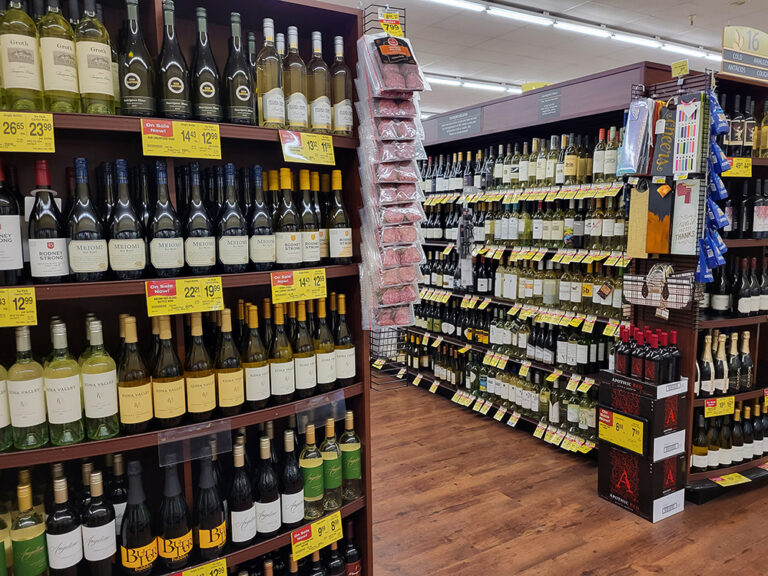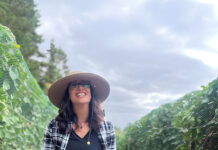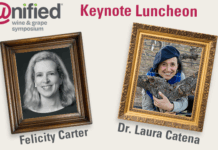
This seemingly provocative question, “Is the wine industry’s thinking about how to get younger drinkers to buy wine outdated?” was the departure point for a compelling Wine Market Council (WMC) webinar entitled “Reducing Barriers to Purchasing Wine,” the first component of a new two-part study on what young consumers think about buying wine, both pro and con.
The industry has fallen fast in attracting younger drinkers who have a broader array of beverage choices than any previous generation. From BuzzBalls to Sauvignon Blanc with frozen jalapenos (popular on TikTok), they’re drinking more adventurously than ever before.
Inside the Consumer Mindset: Frustrations and Opportunities
CPG marketing consultant Russ Onish, president of Tampa-based Vista Grande, studies consumers across many different purchase categories. “One way to kind of think about what I have in store for you today is to really burst your bubble,” he said, before he played several dozen video clips from the 60 Gen Z and millennial interviewees the study did subjective research with. They all talked about why they do or don’t purchase wine.
“Think of this as a virtual journey to better relate to young alcoholic beverage consumers who actually like wine but need help figuring out how to connect it to their life and the occasions that they experience,” he said.
His main takeaway, borne out by the shopper videos: “We need to think about the occasions more than the demographics.”
Not all the consumers like wine. Some of the negative sentiments they mentioned include, “It doesn’t go with BBQ,” “I don’t like throwing out the leftover wine in the bottle that went bad” and “It’s not light enough (i.e., like beer) to drink a lot of.” Others: “I wish there was a classy way to drink from a non-glass container when I’m at the pool” and price: “It’s too expensive to get a good bottle.”
Pros were: “It’s easy for parties, you just open the bottle.” “I really like rosé. There are fewer options and fewer decisions to make.”
Consumers also like online filters to help them overcome the confusion of the wall of wine at convenience stores and supermarkets.
Many suggested small serving containers and removing the stigma from boxed wines.
“The stigmatization of entry-level options in the wine category, whether it’s box wine or less expensive wine, that’s a real problem,” Onish said.
Innovation Needed in On-Premise and Retail
Lisa Gulick, senior vice president for national accounts retail with Southern Glazer’s, weighed in with both the on-premise and retail perspective coupled with some innovative ideas.
She showed data that wine is becoming more invisible and more expensive in the on-premise world. “The ‘by the glass’ listings have gone down by almost 15% since pre-COVID vs today,” Gulick said. “And what’s scary about that is that when you specifically talk about fine dining, that’s actually the channel where wine is the preferred alcoholic beverage.”
Additionally, her data on wine pricing comparisons showed on-premise wine prices increasing dramatically, on average 33%, while actual wine prices increased only 8% off-premise. “I think the on-premise is unfortunately still using wine as a way to gain some extra margin,” Gulick said.
One solution? She liked the menus that offered 3-, 6- and 9-ounce pour options. “I love this idea.”
In the retail environment, Gulick praised in-store displays that put wine next to the cheese section, suggesting that would be a great pairing. “We underestimate how those simple cues can make a big difference to somebody that’s looking at a wall of options.”
While boomers are a third of the population, they overindex for wine, buying half the wine sold. But the future wine buyer? They need to discover wine, and it’s got to be easier, Gulick said, suggesting a Spotify-like approach to appeal to younger consumers.
If you want to work out, you just tell Spotify and it comes up with a personalized playlist, she said. Gulick then painted a picture of how that approach could help a wine buyer in a store cut to the chase.
“The guy who wanted the barbecue in the grill, imagine if he could just ask a kiosk at a store, ‘Hey, I’m making barbecue tonight. What do you recommend?’
“I just think that this type of opportunity, especially for the wine category, could be a game changer just because of the educational barrier that I think we’re all agreeing very much exists,” Gulick said.
The full video of the study is available to WMC members. Part two of the study will be a national quantitative survey and will release shortly. A new list showing the dues paid for membership is now online at https://winemarketcouncil.com/join/.











